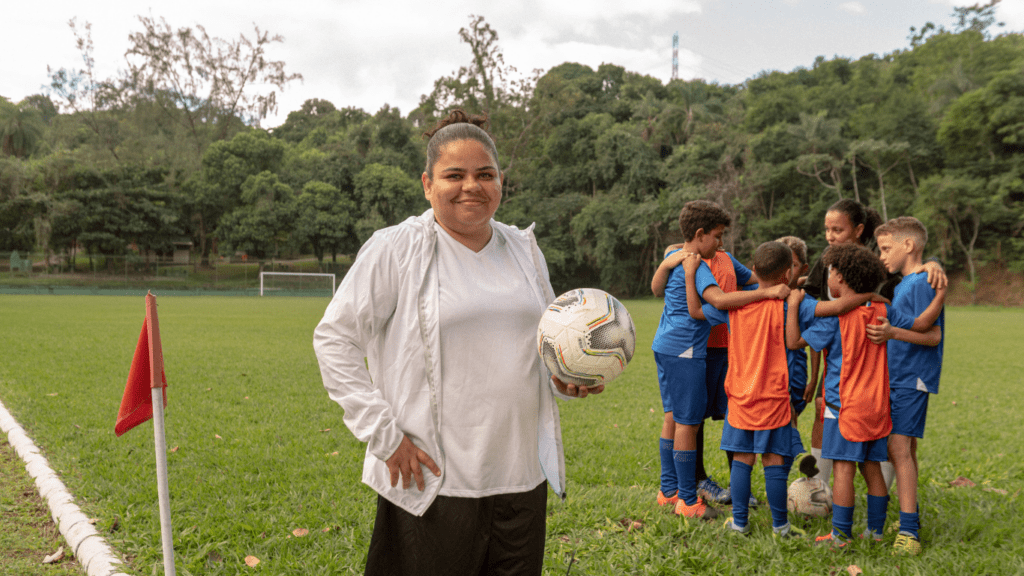Creating an inclusive and safe training environment is essential for fostering growth and collaboration. I’ve seen firsthand how diverse perspectives can enhance learning experiences, making everyone feel valued and heard.
When individuals feel safe, they’re more likely to engage, share ideas, and contribute to a positive atmosphere. In today’s world, it’s crucial to prioritize inclusivity in training settings. This not only helps build stronger teams but also encourages innovation and creativity.
By implementing strategies that promote safety and acceptance, we can transform our training programs into spaces where everyone thrives. Let’s explore how we can create these empowering environments together.
Understanding Inclusivity in Training
Inclusivity in training encompasses creating an environment where every participant feels welcomed, respected, and valued. Fostering this kind of atmosphere enhances learning and growth for all.
- Definition of Inclusivity: Inclusivity refers to the practice of ensuring that individuals of diverse backgrounds—regarding race, gender, age, ability, sexual orientation, and socioeconomic status—are actively integrated into training programs. An inclusive training environment values differences, promotes equal opportunities, and encourages participation.
- This concept extends beyond awareness; it involves proactive measures to eliminate barriers and biases.
- Importance of Inclusivity in Training: Inclusivity in training enhances learning outcomes and strengthens team dynamics. When all voices contribute, training programs benefit from diverse perspectives, enabling creative problem-solving and innovation. Inclusivity fosters a sense of belonging, improving engagement and participation rates among trainees.
Key Elements of Safe Training Environments
Creating safe training environments involves addressing both physical and psychological safety. These elements ensure that participants feel comfortable and secure, promoting an atmosphere conducive to effective learning.
Physical Safety Considerations
Implementing physical safety measures enhances participants’ sense of security. Ensuring proper room setup prevents accidents and allows for free movement. Including emergency exits and first aid kits prepares for unforeseen incidents.
Regularly inspecting equipment, such as chairs and projectors, maintains a hazard-free space. Training staff on safety protocols promotes quick responses to emergencies. Additionally, communicating safety procedures clearly reduces anxiety and fosters confidence among participants.
Psychological Safety
Establishing psychological safety encourages open communication and risk-taking. Creating an atmosphere where participants can express ideas without fear makes collaboration possible.
Actively soliciting feedback from attendees ensures their voices are heard and respected. Implementing ground rules that promote respectful dialogue fosters a communal sense of belonging.
Training leaders to recognize and address conflicts promptly preserves emotional well-being. Providing resources for mental health support reassures participants that their psychological needs are valued. Prioritizing psychological safety cultivates trust, ultimately enhancing the overall training experience.
Strategies for Creating Inclusive and Safe Training Environments
Creating inclusive and safe training environments requires thoughtful strategies. These strategies ensure that all participants feel valued and empowered to contribute.
Designing Accessible Training Programs
Designing accessible training programs involves addressing the needs of diverse learners. I focus on creating materials that accommodate various learning styles by incorporating visual, auditory, and kinesthetic elements.
Designing venues with wheelchair access and restrooms for all gender identities supports physical inclusivity. Providing alternative formats of training resources, such as braille or captioned videos, enhances accessibility for individuals with disabilities.
Implementing flexible schedules allows participation for those with differing commitments and time zones. By integrating these aspects, I enhance accessibility and encourage broader participation.
Fostering Open Communication
Fostering open communication is vital for building trust in training environments. I establish ground rules that emphasize respect and confidentiality, creating a safe space for sharing thoughts. Encouraging feedback through anonymous surveys helps gather honest opinions and addresses areas for improvement.
Using active listening techniques, I validate participants’ contributions and ensure everyone feels heard. Regular check-ins throughout the training empower individuals to voice concerns or suggestions. By prioritizing open communication, I promote an environment where participants engage freely and feel a sense of belonging.
The Role of Trainers in Promoting Inclusivity
Trainers play a crucial role in fostering inclusivity within training environments. Their actions and approach significantly influence participants’ experiences and perceptions of safety and acceptance.
Maintaining Sensitivity and Awareness
Trainers must cultivate sensitivity and awareness regarding diverse backgrounds and experiences. Understanding cultural differences enhances connections among participants. I practice active listening, allowing me to respond appropriately to participants’ needs.
I acknowledge individual challenges, ensuring everyone feels heard and valued. Creating a training atmosphere where participants can share their perspectives leads to richer discussions and collaboration. Using inclusive language also reinforces a commitment to sensitivity, helping to avoid alienating any participant group.
Encouraging Diversity in Participants
Trainers should actively encourage diversity among participants. I promote diverse recruitment strategies, highlighting the value of varied perspectives. Engaging underrepresented groups in training enhances learning outcomes.
I foster an environment where participants can share their unique experiences, which enriches collective learning. Collaborating with community organizations can broaden outreach efforts. By celebrating diversity, I create a culture of respect that elevates the training experience for everyone involved.



